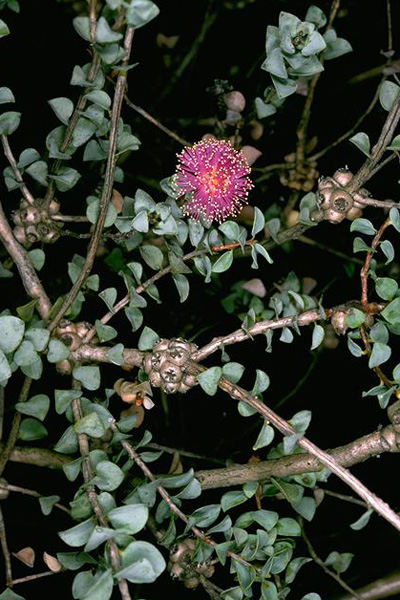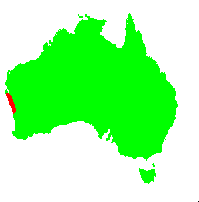General Description:
Phymatocarpus is a small genus of 3 species occurring naturally in the south-west of Western Australia. They are small to medium shrubs with flowers in clusters similar to Melaleuca – a distinguishing feature being that the anthers are basifixed in Phymatocarpus (dorsifixed in Melaleuca). It is closely related to Beaufortia, Calothamnus, Eremaea and Regelia) but differs in the structure of the anthers.
Phymatocarpus porphyrocephalus is a small shrub to about 1 metre high by a similar width. The short leaves are up to 6 mm long and oval or rounded in shape. The purple flower clusters are held on the ends of short stems and are about 15 mm diameter. The flowers gradually fade to white and are seen in spring to early summer. The seed capsules are about 15 mm diameter.
This species is not often seen in cultivation. It is best suited to a Mediterranean-type climate of dry summers and wet winters and is likely to be difficult to maintain in humid, eastern states. A situation in full sun or dappled shade would be suitable in most well drained soils. The plant is likely to be sensitive to heavy frosts.
Phymatocarpus porphyrocephalus can be propagated from seed which does not require pre-treatment. Cuttings of firm, current season’s growth strike readily.

Phymatocarpus porphyrocephalus
Photo: Murray Fagg – Australian National Botanic Gardens
 Australian Native Plants Society (Australia)
Australian Native Plants Society (Australia)













